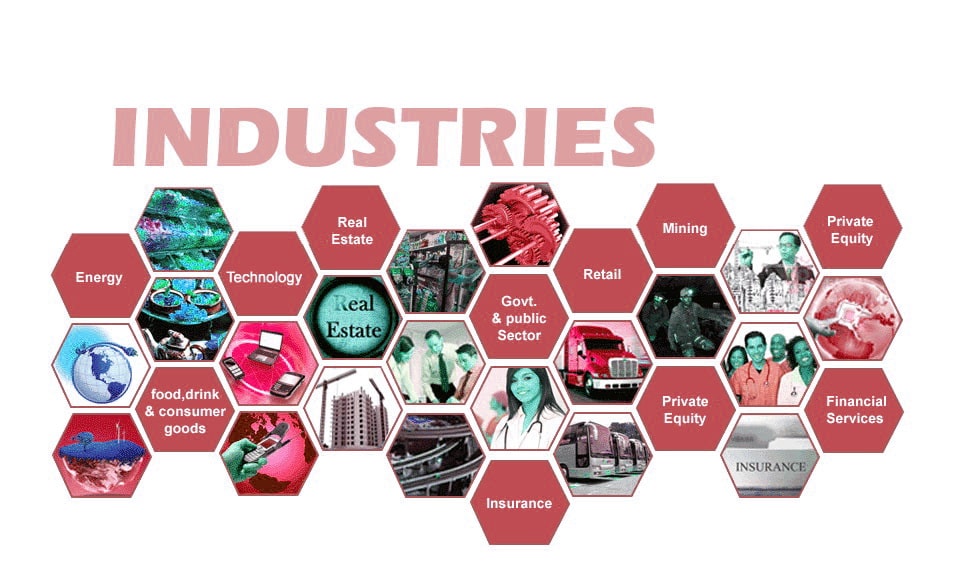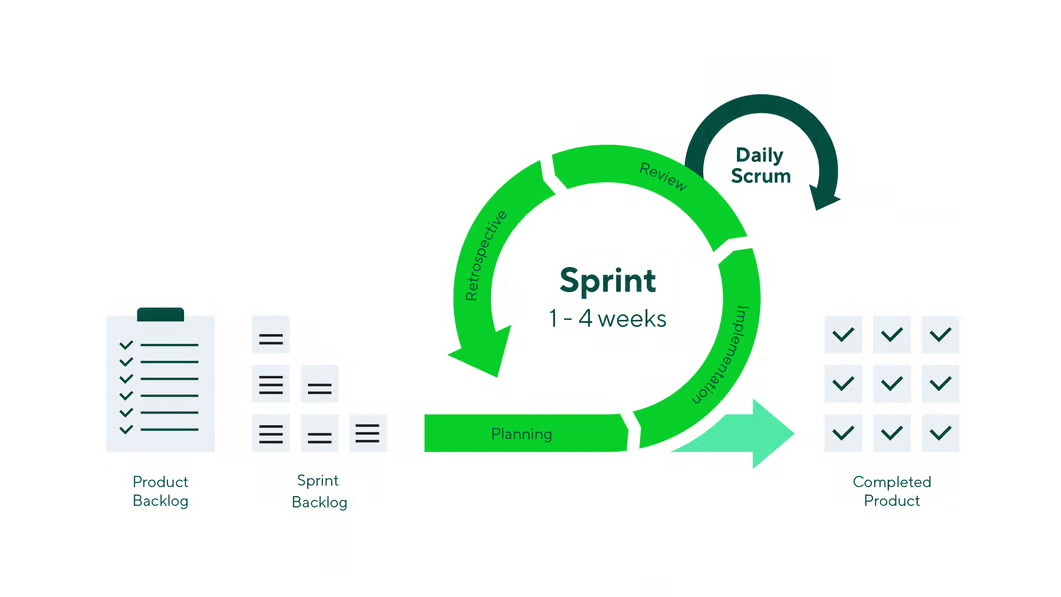The Scrum Framework, is the number 1 choice
Welcome to the fascinating world of Scrum Framework, the number 1 choice of many people, teams, and organizations!
In this blog post, we will delve into why the Scrum Framework is the top choice for numerous individuals, teams, and organizations.
Scrum is an agile framework that enables teams to work together effectively toward achieving their goals. It’s like a team game, where each player has a specific role, just like in soccer.
Let’s imagine you and your friends playing soccer. Each of you has a role to win the game. Similarly, Scrum Framework helps teams collaborate and complete projects, solve problems, or create amazing things!

What is Scrum?
Scrum is an exciting team-based approach that enhances collaboration and productivity. Imagine you and your friends working on a school project. Scrum acts as a secret ingredient that makes your teamwork even better!
It helps you plan your work, communicate effectively, and adapt to changes along the way. Just like in soccer, where each player has a specific role to win the game, Scrum assigns roles to team members, such as the Product Owner, Scrum Master, and Team Members.
Each role has its responsibilities, similar to different positions in a soccer team. Together, you collaborate and support each other to achieve success!
Before we delve deeper into Scrum, I strongly recommend watching this brief 10-minute course on the Scrum framework to broaden your understanding: Introduction to Scrum Framework.

The Importance of Scrum in Today’s World
Scrum Framework has gained immense popularity in the business world for several reasons. Let’s explore why Scrum is such a valuable framework:
Agility and Adaptability
In today’s fast-paced and rapidly changing world, organizations need to be agile and adaptable to stay competitive. Scrum Framework provides the flexibility and responsiveness required to navigate uncertainties and embrace change. It’s like having superpowers that help you adjust your game plan as you play.
By dividing work into short Sprints, Scrum Framework allows teams to quickly adapt to evolving requirements, market conditions, and customer feedback. This ability to respond promptly to change gives organizations a significant advantage in delivering value to their customers.
Empowered and Engaged Teams
Scrum Framework empowers teams by giving them autonomy and ownership over their work. Imagine you and your friends having a say in how you want to work on a project.
That’s what Scrum offers!
The self-organizing nature of Scrum Framework enables teams to make decisions collectively, take responsibility, and find the best ways to accomplish their goals. This empowerment fosters a sense of ownership, engagement, and commitment among team members.
When each team member contributes their ideas and talents, magic happens! You become more productive and satisfied with your work.
Continuous Improvement
One of the coolest things about Scrum Framework is that it promotes continuous improvement. It’s like a superpower that helps you learn and grow every step of the way.
Through regular retrospectives, Scrum teams reflect on their work, identify areas for improvement, and implement changes to enhance their performance. It’s like having a halftime break during a soccer game, where you discuss what went well and how to improve for the next half.
This iterative approach helps teams learn from their experiences, celebrate successes, and address challenges effectively. Continuous improvement is not only valuable for teams but also for organizations as a whole, as it promotes a culture of learning, innovation, and adaptability.
Transparency and Collaboration
Scrum promotes transparency and collaboration by creating an environment where information flows freely and everyone is encouraged to share their ideas and concerns. It’s like having open communication channels that keep everyone connected and informed.
The daily Scrum meetings, Sprint reviews, and Sprint retrospectives provide opportunities for open communication, feedback, and collaboration among team members. This transparency not only improves team dynamics but also facilitates better decision-making and problem-solving.
When everyone is on the same page and has a clear understanding of the project’s progress, challenges can be addressed on time, and effective solutions can be implemented.
Value Delivery and Customer Satisfaction
Scrum Framework focuses on delivering value to customers early and regularly. It’s like scoring goals in a soccer game and making your fans happy!
By breaking down work into smaller increments and continuously delivering working product increments, Scrum Framework ensures that customers can provide feedback throughout the development process. This feedback loop allows for the early identification of potential issues or changes in requirements, resulting in a product that better meets customer needs and expectations.
By prioritizing customer satisfaction and delivering value incrementally, Scrum Framework helps organizations build strong relationships with their customers and gain a competitive edge in the market.

Embracing Scrum Framework in Different Industries
Scrum’s flexibility and adaptability make it suitable for a wide range of industries and domains. While it originated in software development, Scrum Framework has found success in various sectors, including:
IT and Software Development
Software development has been one of the primary domains where Scrum has been widely adopted. Its iterative and collaborative nature aligns well with the dynamic and complex nature of software projects.
Scrum enables developers to deliver high-quality software incrementally, respond to changing requirements, and ensure customer satisfaction.
Marketing and Advertising
The marketing and advertising industry can greatly benefit from Scrum’s iterative approach. Scrum can help marketing teams manage campaigns, content creation, and analytics more effectively.
By breaking down complex marketing projects into manageable Sprints, teams can deliver targeted campaigns, measure their impact, and continuously adapt their strategies based on market trends and customer feedback.
Education and Academia
Scrum principles can be applied in educational settings to improve project management, collaboration, and learning outcomes.
Teachers and students can use Scrum Framework to organize group assignments, track progress, and foster a culture of teamwork and continuous improvement. Scrum can also be utilized in educational research projects and administrative tasks to enhance efficiency and productivity.
Product Development
Scrum Framework is valuable in product development, whether it’s physical products, mobile apps, or hardware devices.
By using Scrum Framework, product developers can streamline the design, development, and testing processes.
The iterative nature of Scrum Framework allows for frequent feedback and validation, resulting in products that better meet customer needs and expectations.

Scrum Framework: Key Elements and Principles
Scrum is a collaborative framework based on a set of values, principles, and practices. Let’s delve into the essential components of Scrum:
Scrum Values
Scrum relies on five core values that shape effective teamwork:
- Courage: Embrace the bravery to express ideas, take risks, and explore new possibilities. For example, a student demonstrating courage might voice an innovative solution during a classroom discussion.
- Focus: Maintain unwavering attention to the end goal and prioritize essential tasks. Minimize distractions and remain dedicated to completing the work at hand.
- Openness: Foster an environment of honesty and transparency within the team. Share thoughts, ideas, and concerns openly, actively listen to others and be receptive to feedback.
- Commitment: Make a personal and team commitment to give your best effort. Stay dedicated to completing tasks and achieving goals, contributing to collective success.
- Respect: Treat team members with kindness, empathy, and respect. Value diverse perspectives and work harmoniously, leveraging each member’s unique strengths and talents.
Scrum Principles
Scrum follows several principles that enable teams to succeed. Let’s explore some of these key principles:
- Empirical Process Control: Scrum emphasizes making decisions based on observation, experimentation, and feedback. Learn from actions taken, adjust approaches accordingly, and continually improve based on insights gained.
- Self-Organization: Scrum empowers teams to determine the best approaches for accomplishing their goals. Collaborate, make decisions collectively, and take ownership of the work to foster autonomy and productivity.
- Time Boxing: Timeboxing involves setting specific time limits for tasks and activities. By allocating dedicated time slots, teams stay focused, prioritize effectively, and work efficiently within defined intervals.
- Iterative and Incremental Development: Scrum divides work into manageable units called Sprints. Each Sprint represents a short time frame during which the team focuses on specific tasks to create small increments of the final product. This iterative approach allows for frequent feedback and continuous improvement.
Scrum Artifacts
Scrum employs various artifacts to facilitate organization and progress tracking. These artifacts provide transparency, promote collaboration, and help in tracking progress and delivering value in an iterative manner throughout the Scrum framework. Let’s explore the key artifacts:
- Product Backlog: The Product Backlog serves as a comprehensive list of tasks, ideas, and features that need completion within the project. It functions as a dynamic to-do list that the team continuously works through.
- Sprint Backlog: The Sprint Backlog comprises the subset of tasks from the Product Backlog that the team commits to completing during a specific Sprint. It serves as a focused plan for the duration of the Sprint.
- Increment: An Increment represents the outcome of a Sprint. It is a working version of the product that incorporates improvements and enhancements based on the completed work within that Sprint.
The Scrum Team
Within Scrum, three crucial roles contribute to effective collaboration and productivity: the Product Owner, the Scrum Master, and the Developers. Let’s explore each role in detail:
- Product Owner: The Product Owner acts as the team captain, possessing a vision and understanding of what needs to be done. They engage with customers or users to grasp their requirements and expectations. The Product Owner then creates and prioritizes tasks in the Product Backlog, ensuring that the team focuses on the most valuable work.
- Scrum Master: The Scrum Master serves as a coach, guiding the team towards effective collaboration and adherence to Scrum principles. They facilitate meetings, promote collaboration, and remove any obstacles or problems hindering progress. The Scrum Master ensures that the team understands and follows the Scrum framework, fostering a productive work environment.
- Developers in Scrum: Developers consist of individuals who collaboratively complete the tasks required to achieve Sprint goals. Similar to the players on a soccer team, each member brings unique skills and talents. They design, create, and test the final product, collaborating, sharing knowledge, and supporting one another.

The Scrum Events
Now that we know who the key players are, let’s explore how Scrum works. Scrum is divided into smaller periods called “Sprints.” A Sprint is like a mini-project with a specific goal. Here’s how it works:
- Sprint Planning: At the beginning of each Sprint, the team gathers to decide which tasks to work on. They choose the tasks from the Product Backlog, which is the list of all the things the team needs to do. The team discusses and estimates how much work can be done during the Sprint.
- Daily Scrum or Stand-up: During the Sprint, the team has a short meeting called the Daily Stand-up. Each team member talks about what they did the previous day, what they will do today, and if they have any problems. The Daily Stand-up helps the team stay updated, identify issues, and coordinate their work.
- Sprint Review: At the end of each Sprint, the team shows what they have done to the Product Owner and other important stakeholders. It allows the team to gather feedback and make necessary improvements.
- Sprint Retrospective: After the Sprint Review, the team has a meeting called the Sprint Retrospective. They discuss what went well during the Sprint and what can be done better next time. The Sprint Retrospective helps the team learn and grow together.
IMPORTANT: The team sets a Sprint Goal for each Sprint. It helps the team stay focused and work together to achieve something important. The Sprint Goal provides direction and clarity to the team.

Benefits of Scrum
Scrum offers numerous benefits for individuals and companies. Let’s explore some of them:
Personal Benefits:
- Improved time management skills: Scrum helps individuals develop effective time management skills by breaking work into manageable chunks and setting clear deadlines.
- Enhanced collaboration: Scrum promotes teamwork, communication, and collaboration, allowing individuals to work together towards a common goal.
- Increased accountability: Scrum encourages individuals to take ownership of their work and be accountable for their actions and commitments.
- Continuous learning and improvement: The iterative nature of Scrum allows individuals to learn from their experiences, make adjustments, and continually improve their work.
Company Benefits:
- Increased productivity: Scrum enables teams to work in a structured and efficient manner, resulting in higher productivity and faster project delivery.
- Enhanced customer satisfaction: By involving the Product Owner and gathering regular feedback, Scrum ensures that the end product meets customer expectations and leads to higher satisfaction.
- Adaptability to change: Scrum’s iterative approach allows teams to adapt to changing requirements and market conditions more easily, leading to increased agility and competitiveness.
- Improved transparency: Scrum provides transparency into the progress of work, allowing stakeholders to have a clear view of project status and make informed decisions.

Who Can Start a Scrum Career?
Scrum welcomes individuals from all backgrounds who seek a collaborative and dynamic work environment. Whether you’re a student, a professional, or a young learner, you can embark on your Scrum journey.
Transitioning to Scrum is possible regardless of your IT background; all you need is determination, hard work, and a reliable learning resource, which I’ll provide at the end of this post. Scrum roles, such as Product Owner, Scrum Master, or member of the Developers, require different skills and experiences.
But anyone with a passion for teamwork, problem-solving, and continuous improvement can pursue a Scrum career.
Starting a Scrum Career
Scrum offers exciting career opportunities for individuals who enjoy collaboration, problem-solving, and leading teams. Here are a few key points to consider if you’re interested in starting a Scrum career:
Continuous Learning and Improvement
Scrum encourages a growth mindset and a commitment to continuous learning and improvement. As you embark on your Scrum journey, be open to new ideas, seek opportunities for personal and professional development, and stay updated with the latest trends and practices in the Scrum community.
Attend Scrum events, join online communities, and consider pursuing Scrum certifications to enhance your knowledge and skills.
Developing Soft Skills
While Scrum roles require technical expertise, they also demand strong interpersonal and communication skills.
As you progress in your Scrum career, focus on developing skills such as facilitation, conflict resolution, active listening, and effective communication. These skills will enable you to effectively collaborate with stakeholders, facilitate meetings, and guide teams toward success.
Building Experience and Applying Scrum
Building practical experience is essential for a successful Scrum career. Look for opportunities to apply Scrum principles and practices in real-world projects, even if it’s on a small scale.
Volunteer for Scrum roles within your organization or participate in Scrum initiatives in your community. This hands-on experience will not only strengthen your understanding of Scrum but also showcase your ability to apply it effectively.
Embracing the Scrum Values
The Scrum Values—Openness, Courage, Focus, Commitment, and Respect—are at the heart of Scrum. Embrace these values and strive to incorporate them into your daily interactions and decision-making.
By embodying these values, you’ll create a positive and productive work environment and contribute to the success of Scrum initiatives.
Conclusion
If you’ve made it this far, congratulations!!!
Scrum has transformed the way teams and organizations work, enabling them to be more adaptive, collaborative, and customer-focused.
By embracing Scrum, individuals and companies can experience numerous benefits, including improved productivity, customer satisfaction, and innovation.
Whether you’re starting your Scrum journey or have years of experience, remember to foster a mindset of continuous improvement, embrace collaboration and transparency, and apply Scrum’s principles and practices in a way that best suits your context. May your Scrum endeavors be filled with success and fulfillment!
Believe it or not, you’ve just completed your crash course on Scrum.
Scrum is not only a framework for work but a mindset that promotes collaboration, adaptability, and achieving great things together.
Whether you’re playing soccer, organizing an event, or tackling school projects, Scrum can help you and your team succeed.
Embrace the spirit of Scrum, and you’ll be amazed at what you can accomplish.
In this all-inclusive blog post, I’ve covered the WHAT and WHY of Scrum. For a more in-depth understanding of HOW to implement Scrum, the Agile and Scrum Masterclass is the perfect solution. This comprehensive Scrum resource covers every step of the Agile and Scrum journey, providing you with valuable insights and practical knowledge.
Happy Scrumming!
